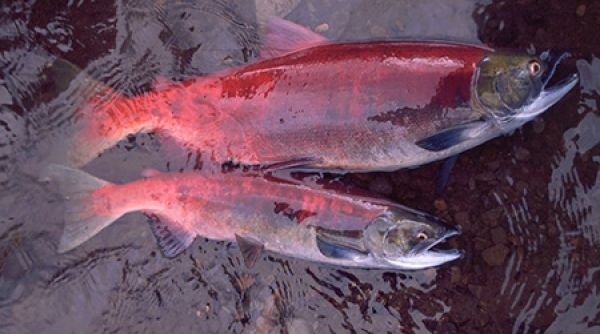The size of salmon returning to rivers in Alaska has declined dramatically over the past 60 years because they are spending fewer years at sea, according to a new study led by researchers at the University of California, Santa Cruz, and the University of Alaska Fairbanks.
Salmon are critically important to both people and ecosystems in Alaska, supporting commercial and subsistence fisheries and transporting nutrients from the ocean to inland areas, fertilizing the ecosystems in and around the rivers where they spawn. Smaller salmon provide less food for people who depend on them, less value for commercial fishers, and less fertilizer for terrestrial ecosystems.
For years, people in Alaska have been noticing that wild salmon were getting smaller, but the reasons have been unclear. In the new study, published August 19 in Nature Communications, researchers compiled and analyzed data collected over six decades (1957 to 2018) from 12.5 million fish by the Alaska Department of Fish and Game. This unprecedented dataset enabled them to see patterns of body size changes for four species of salmon—Chinook, chum, coho, and sockeye—across all regions of Alaska.
Read more at University Of California - Santa Cruz
Photo: One additional year in the ocean makes a big difference in the size of salmon, as seen in these two female sockeye salmon from Pick Creek, Alaska. The top salmon spent three years at sea, the other two years. (Photo by Andrew Hendry)


